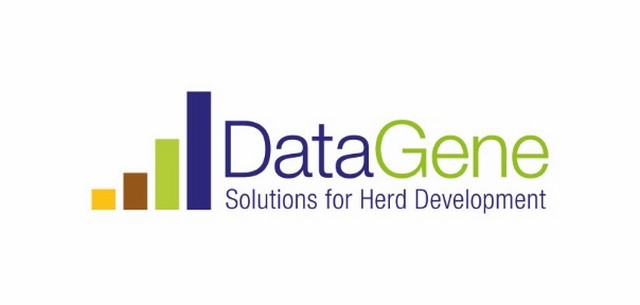Darren and Sharon Parrish use Australian Breeding Values (ABVs) for workability and calving ease to help run a productive and profitable dairy business and make better decisions on their farm at Bodalla, on the New South Wales south coast.
The ABVs help them identify bulls whose progeny are quick and relaxed milkers, while reducing the need for assisted calvings.

While these ABVs are on the check list for any bulls used in the herd, the Parrishs also record the traits within their own herd so they have a measure on how each heifer and cow performs and how their herd is tracking.
Their herd’s Workability and Calving Ease records also go back to DataGene and are essential in building reliability in the proofs of the bulls they have used, a process which underpins ABVs and the genetic evaluation system.
“We’ve been keeping detailed cow records for a long time – it’s something I really like doing because the information we collect gives us feedback on our cows,” Sharon said. “While it does involve a bit of extra work, the information you get back shows you what your cows are doing, the gains we are making and helps us make better decisions.” The Parrishs milk 200 registered Holsteins cows year round under their Darradale prefix.
Workability
The Parrishs have recorded workability traits for all 2-yearold heifers in their first lactation for more than 20 years. Workability covers three traits that reflect how easy a cow is to have in the herd: milking speed, temperament and likeability. The Workability ABV is included in each of the three indices – Balanced Performance Index (BPI), Health Weighted Index (HWI) and Type Weighted Index (TWI), with the highest weighting in the HWI.
“We’ve always recorded the workability traits for our heifers but our on farm software program makes it really straight forward,” Sharon said. “Once a heifer’s calving date is recorded in the system, 30 days later Easy Dairy will automatically flag that the heifer needs to be assessed for the workability traits. “We calve 50-60 heifers at a time twice a year, so we will have two batches a year that need to be recorded as they come through the shed.
“Once we have assessed the heifers for their milking speed, temperament and likeability, those records are automatically sent to our herd recording service, Dairy Express. “It might seem like extra work but we are really interested in our cows and we want to know who is slow or nervous as they are not the types of cows we want in the herd.”
Calving ease
The Calving Ease ABV is an indicator of how easily a bull’s progeny will be born – bulls with a calving ease ABV of 100 or more produce easier calvings. The calving ease score has a range of code options from a normal birth, assisted and the level of assistance required up to surgical assistance.
“Every time a calf is born we record the date, its dam, its size, sex, calving ease score and fate,” Sharon said.
“When we select bulls to use over the herd we look at calving ease because we want to minimise calving problems.
“Heifers that have unassisted calvings reach peak production faster and get back in calf sooner than heifers that need assistance. “Heifers which have assisted calving also involve extra labour and often incur veterinary costs.
“It’s expensive to breed and grow out a heifer to the point of calving so we want our heifers to calve unassisted and come into production strongly and then get back in calf and stay in the herd.”
Record keeping
Sharon said having systems in places to record data, meant collecting cow records became second nature and fitted in with other farm activities.
“You can set things up so recording data is quick and easy,” she said. “I don’t see it as extra work, but more of an investment – the more reliable our records are, the more reliable the information is that we get back on our herd.
“Our record keeping was originally on paper but we now use Easy Dairy, although we still keep a paper diary in the dairy which everyone can refer to and use.”
“I’ve also recently downloaded the HerdData app which should make it easier to record data such as matings on our lease block and also calvings out in the paddock because I will able to use my mobile phone. “We do most of the milking – when you are hands on with the herd it is certainly makes recording data easier.”
Better decisions
Sharon said recording Workability and Calving Ease data on farm had a two-fold benefit.
“Recording Workability and Calving Ease traits gives us information on our herd, while contributing data back on the bulls we have used, which improves the reliability of their ABVs. If we want bulls to have meaningful and accurate proofs then we need to supply figures on their daughters’ traits back through the herd tests companies to get accurate bull ABVs.
“The figures also mean we can see the genetic progress we are making in our herd because we have accurate, objective data on the cows in our herd.
“The end result is that we know what we are breeding and can use the data from our herd and the bulls we use to make faster genetic gain.”
The Parrishs recently received genotypes on their heifers as well as estimates of the difference between the low and high genetic merit animals in terms of their contribution to farm profit as a result of being a genetic focus farm for the ImProving Herds Project.
Article and photos provided by DataGene
